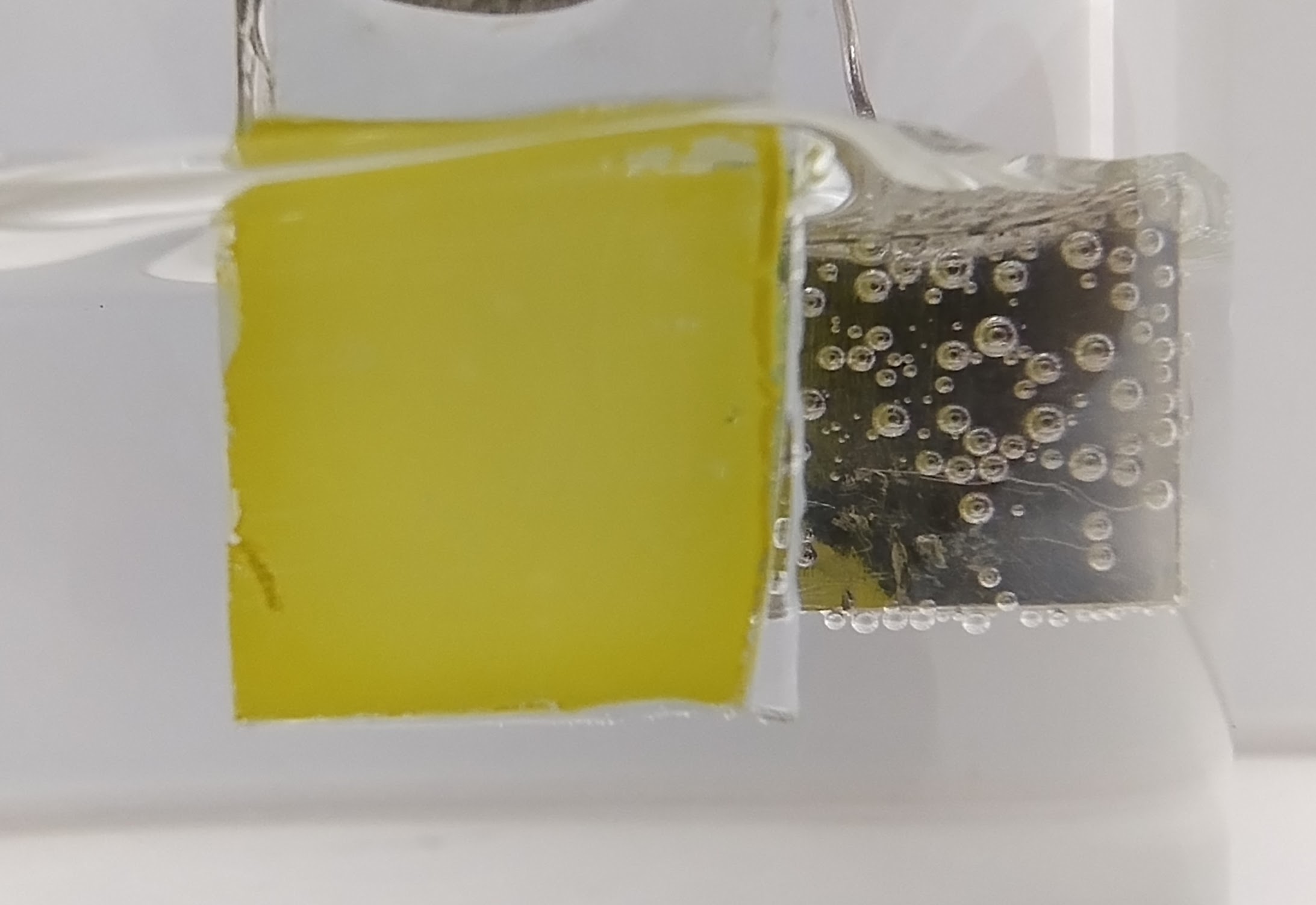CINE study shows a way to more efficient production of green hydrogen

A study led by CINE researchers shows a way to increase the efficiency of photoelectrochemical cells, devices that use sunlight as a clean and renewable energy source to generate green hydrogen.
In these devices, light is absorbed in the photoanode by sensitive materials and drives a series of oxidation (loss of electrons) and reduction (gain of electrons) reactions that ultimately split the water molecule into oxygen and hydrogen molecules.
However, water oxidation is a slow and inefficient process. For this reason, several research groups around the world are studying ways to overcome this limitation.
One of them consists of replacing water with other molecules that can be oxidized more easily and generate larger electrical currents, making hydrogen production more efficient. The idea is to use organic molecules obtained from renewable and sustainable sources, such as biomass waste.
“The hydrogen generation process requires energy, which can come from the electrical grid, as in classic electrolysis, or from other sources, such as solar energy,” explains Elton Sitta, a Professor at UFSCar and researcher at CINE. “In our work, we studied organic molecules that, when oxidized, can serve as sources of electrons and protons for hydrogen generation,” adds Sitta, who led the study.
The authors conducted experiments to compare the oxidation of methanol, ethylene glycol, and glycerol molecules in bismuth vanadate photoanodes, a material considered promising for this type of application due to its good light absorption, low toxicity, low cost, and stability in against humidity and light.
The research team concluded that glycerol, popularly known as glycerin, has the best activity in generating electrons for the production of green hydrogen. In addition, glycerol is a substance widely available in Brazil because it is a byproduct of biodiesel production. Finally, its oxidation generates, in addition to electrons, some substances that can be used as raw materials in various industries.
The research takes another step in the development of processes for the efficient generation of green hydrogen. “For large-scale production, there are challenges both for the oxidation of water and for the oxidation of organic molecules as a source of electrons, but organic molecules have proven to be an interesting alternative to avoid corrosion of photocatalysts and the possibility of obtaining other value-added products”, concludes Sitta.
Conducted at Unicamp and UFSCar, the study was funded by Fapesp, Shell, CNPq and Capes, in addition to strategic support from ANP.
Reference of the scientific article: Cristian Hessel, Lauren Moreti, Victor Yoiti Yukuhiro, Pablo S. Fernández, Elton Sitta. Methanol, ethylene glycol, and glycerol photoelectrochemical oxidation reactions on BiVO4: Zr,Mo/Pt thin films: A comparative study. Electrochimica Acta 509 (2025). https://doi.org/10.1016/j.electacta.2024.145300
CINE members who participated in the work: Elton Sitta (researcher of the Green Hydrogen program), Pablo S. Fernández (researcher of the Green Hydrogen program), Victor Yoiti Yukuhiro (PhD student) and Lauren dos Santos Moreti (PhD student).
Contact

Elton Fabiano Sitta
UFSCar

